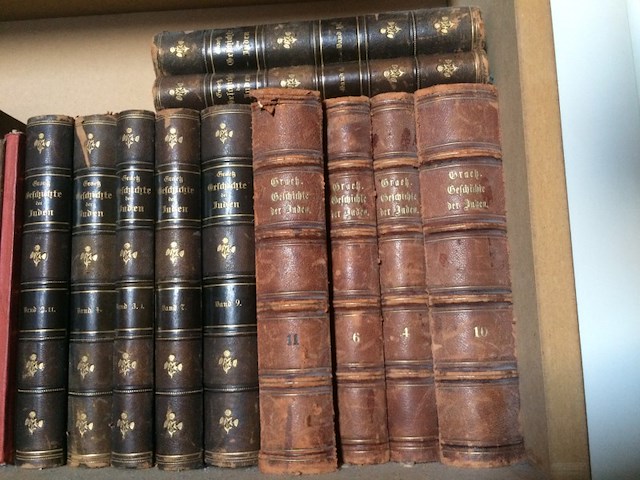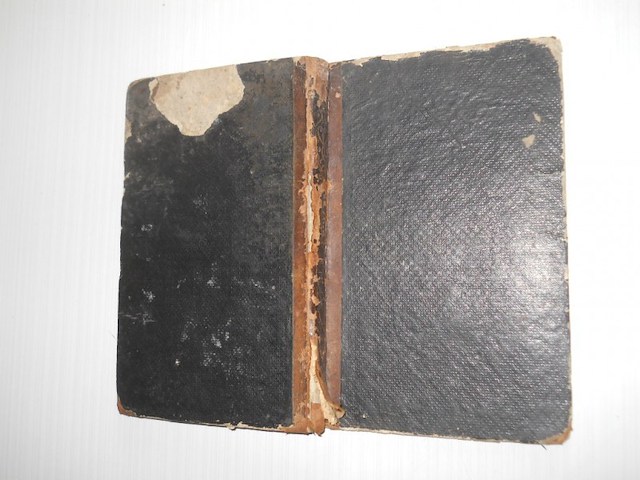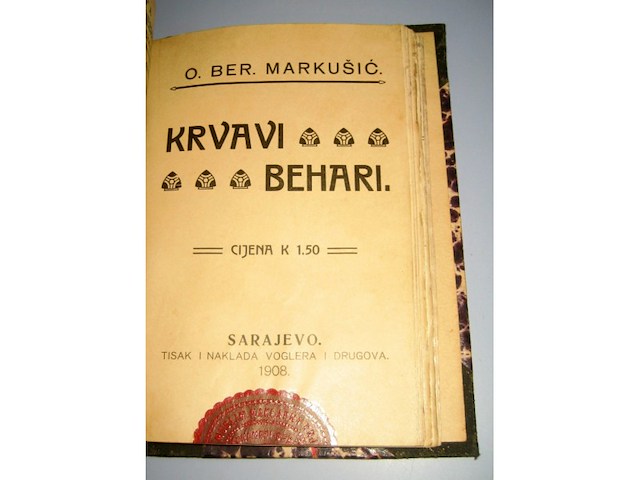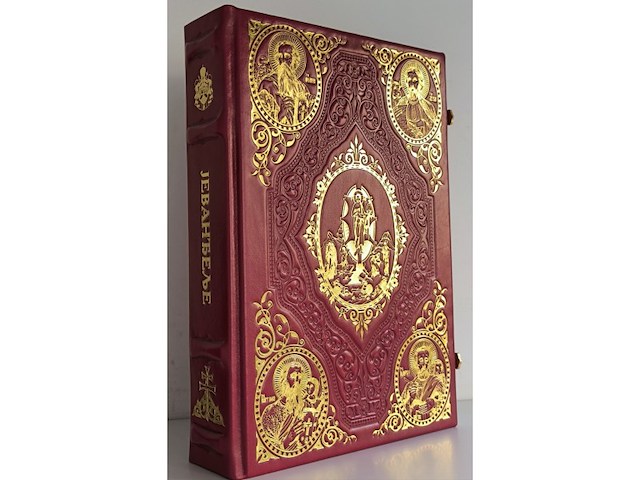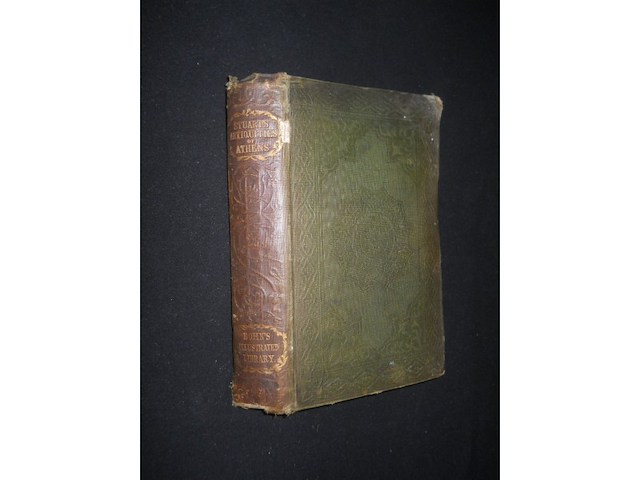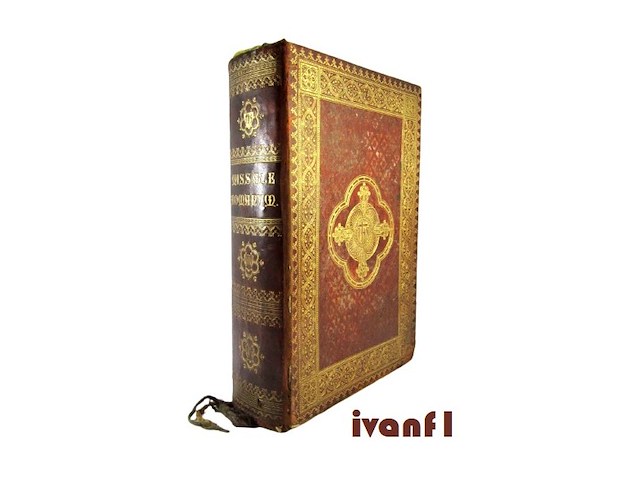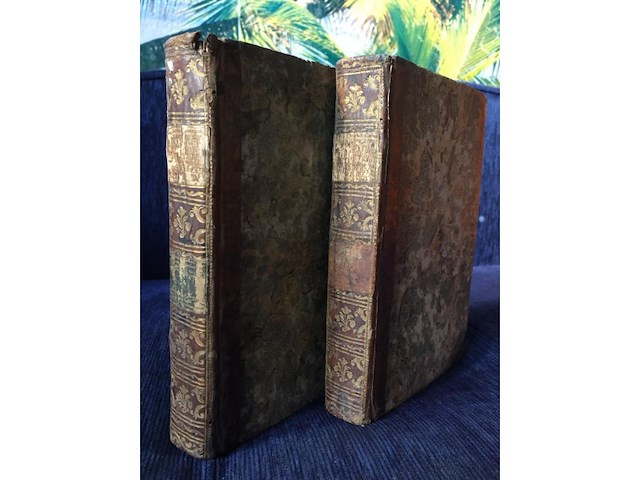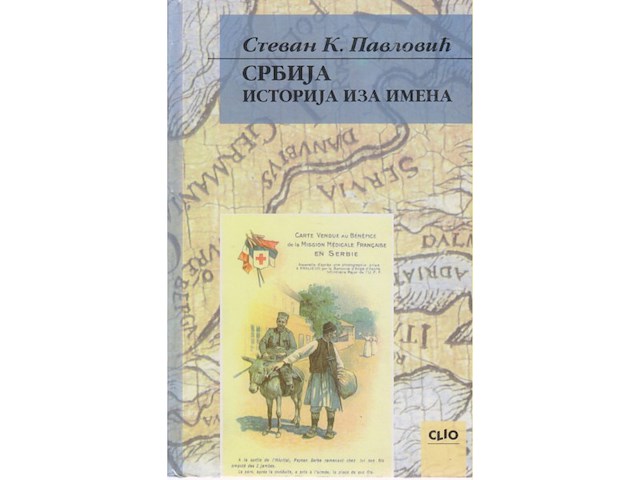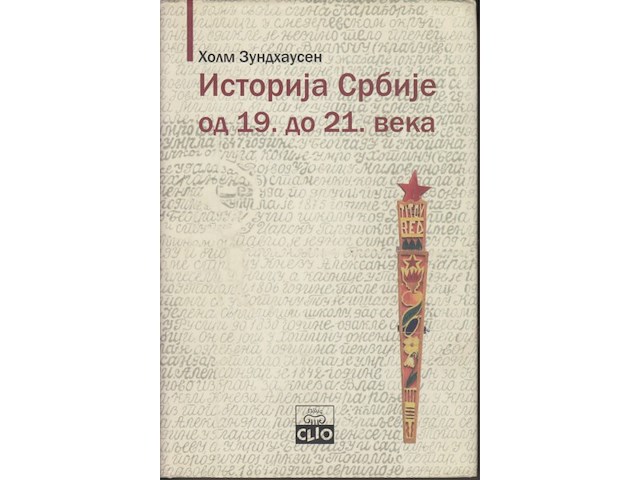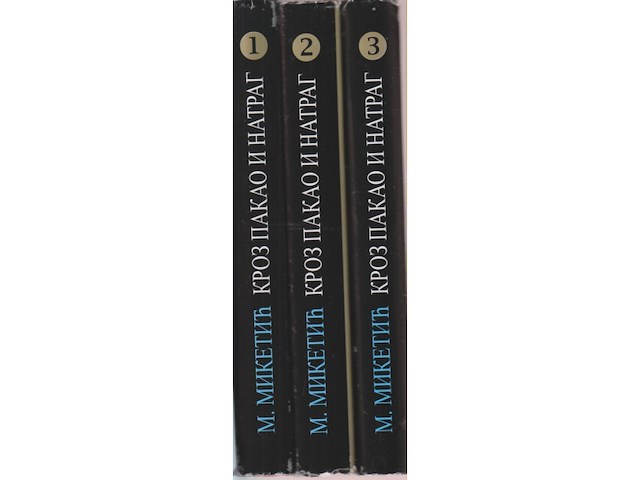Pratite promene cene putem maila
- Da bi dobijali obaveštenja o promeni cene potrebno je da kliknete Prati oglas dugme koje se nalazi na dnu svakog oglasa i unesete Vašu mail adresu.
151-175 od 47091 rezultata
Režim promene aktivan!
Upravo ste u režimu promene sačuvane pretrage za frazu .
Možete da promenite frazu ili filtere i sačuvate trenutno stanje
Aktivni filteri
11 knjiga ISTORIJA JEVREJA na nemačkom 1866- / Istorija jevrejskog naroda nemački jezik Graetz, H Geschichte der Juden vom Untergang des jüdischen Staates bis zum Abschluß des Talmud ... Geschichte der Israeliten ukoliko je potrebno mogu uslikati detaljnije RETKO U PONUDI! Heinrich Graetz (German: [ɡʁɛts]; 31 October 1817[1] – 7 September 1891) was amongst the first historians to write a comprehensive history of the Jewish people from a Jewish perspective. Born Tzvi Hirsh Graetz to a butcher family in Xions (now Książ Wielkopolski), Grand Duchy of Posen, in Prussia (now in Poland), he attended Breslau University, but since Jews at that time were barred from receiving Ph.D.s there, he obtained his doctorate from the University of Jena.[2] After 1845 he was principal of the Jewish Orthodox school of the Breslau community, and later taught history at the Jewish Theological Seminary in Breslau (now Wrocław, Poland). His magnum opus History of the Jews was quickly translated into other languages and ignited worldwide interest in Jewish history. In 1869 the University of Breslau (Wrocław) granted him the title of Honorary Professor. In 1888 he was appointed an Honorary Member of the Spanish Royal Academy of Sciences. Graetz received his first instruction at Zerkow, where his parents had relocated, and in 1831 was sent to Wollstein, where he attended the yeshivah up to 1836, acquiring secular knowledge by private study. The `Neunzehn Briefe von Ben Uziel` (see Samson Raphael Hirsch) made a powerful impression on him; and he resolved to prepare himself for academic studies in order to champion the cause of Orthodox Judaism. His first intention was to go to Prague, to which place he was attracted by the fame of its old yeshivah and the facilities afforded by the university. Being rejected by the immigration officers, he returned to Zerkov and wrote to Samson Raphael Hirsch, then rabbi of Oldenburg, intimating his desire. Hirsch offered him a home in his house. Graetz arrived there on May 8, 1837, and spent three years with his patron as a pupil, companion, and amanuensis. In 1840 he accepted a tutorship with a family at Ostrowo, and in October 1842 he entered the University of Breslau. At that time the controversy between Orthodoxy and Reform Judaism was at its height, and Graetz, true to the principles which he had imbibed from Hirsch, began his literary career by writing contributions to the `Orient`, edited by Julius Fürst, in which he severely criticized the Reform party, as well as Geiger`s text-book of the Mishnah (`Orient`, 1844). These contributions and his championship of the Conservative cause during the time of the rabbinical conferences made him popular with the Orthodox party. This was especially the case when he agitated for a vote of confidence to be given to Zecharias Frankel after he had left the Frankfurt conference because of the stand which the majority had taken on the question of the Hebrew language. After Graetz had obtained his degree of Ph.D. from the University of Jena (his dissertation being `De Auctoritate et Vi Quam Gnosis in Judaismum Habuerit,` 1845; published a year later under the title `Gnosticismus und Judenthum`), he was made principal of a religious school founded by the Conservatives in Breslau. In the same year he was invited to preach a trial sermon before the congregation of Gleiwitz, Silesia, but failed completely. He remained in Breslau until 1848, when, upon the advice of a friend, he went to Vienna, purposing to follow a journalistic career. On the way he stopped at Nikolsburg, where Hirsch was residing as Moravian chief rabbi. Hirsch, who then contemplated the establishment of a rabbinical seminary, employed Graetz temporarily as teacher at Nikolsburg, and afterward gave him a position as principal of the Jewish school in the neighboring city of Lundenburg (1850). In October 1850, Graetz married Marie Monasch, the daughter of the printer and publisher B. L. Monasch, of Krotoschin.[3] It seems that Hirsch`s departure from Nikolsburg had an influence on Graetz`s position; for in 1852 the latter left Lundenburg and went to Berlin, where he delivered a course of lectures on Jewish history before rabbinical students. They do not seem to have been successful. Meantime his advocacy of Frankel`s course had brought him into close contact with the latter, for whose magazine he frequently wrote articles; and accordingly in 1854 he was appointed a member of the teaching staff of the seminary at Breslau, over which Frankel presided. In this position he remained up to his death, teaching history and Bible exegesis, with a preparatory course on the Talmud. In 1869 the government conferred upon him the title of professor, and thenceforward he lectured at Breslau University. In 1872 Graetz went to Palestine in the company of his friend Gottschalck Levy of Berlin, for the purpose of studying the scenes of the earliest period of Jewish history, which he treated in volumes one and two of his history, published in 1874-76; these volumes brought that great work to a close. While in Palestine, he gave the first impetus to the foundation of an orphan asylum there. He also took a great interest in the progress of the Alliance Israélite Universelle, and participated as a delegate in the convention assembled at Paris in 1878 in the interest of the Romanian Jews. Graetz`s name was prominently mentioned in the anti-Semitic controversy, especially after Treitschke had published his `Ein Wort über Unser Judenthum` (1879–1880), in which the latter, referring to the eleventh volume of the history, accused Graetz of hatred of Christianity and of bias against the German people, quoting him as a proof that the Jews could never assimilate themselves to their surroundings. Graetz`s tomb in the Jewish Cemetery in Wrocław This arraignment of Graetz had a decided effect upon the public. Even friends of the Jews, like Mommsen, and advocates of Judaism within the Jewish fold expressed their condemnation of Graetz`s passionate language. It was due to this comparative unpopularity that Graetz was not invited to join the commission created by the union of German Jewish congregations (Deutsch-Israelitischer Gemeindebund) for the promotion of the study of the history of the Jews of Germany (1885). On the other hand, his fame spread to foreign countries; and the promoters of the Anglo-Jewish Exhibition invited him in 1887 to open the Exhibition with a lecture. His seventieth birthday was the occasion for his friends and disciples to bear testimony to the universal esteem in which he was held among them; and a volume of scientific essays was published in his honor (`Jubelschrift zum 70. Geburtstage des Prof. Dr. H. Graetz,` Breslau, 1887). A year later (27 October 1888) he was appointed an honorary member of the Spanish Academy, to which, as a token of his gratitude, he dedicated the third edition of the eighth volume of his history. As usual he spent the summer of 1891 in Carlsbad; but alarming symptoms of heart disease forced him to discontinue his use of the waters. He went to Munich to visit his son Leo, a professor at the university of that city, and died there after a brief illness. He was buried in Breslau. Besides Leo, Graetz left three sons and one daughter. Works[edit] History of the Jews[edit] Graetz is chiefly known as the Jewish historian, although he did considerable work in the field of exegesis also. His Geschichte der Juden superseded all former works of its kind, notably that of Jost, in its day a very remarkable production; and it has been translated into many languages. The fourth volume, beginning with the period following the destruction of Jerusalem, was published first. It appeared in 1853; but the publication was not a financial success, and the publisher refused to continue it. However, the publication society Institut zur Förderung der Israelitischen Litteratur, founded by Ludwig Philippson, had just come into existence, and it undertook the publication of the subsequent volumes, beginning with the third, which covered the period from the death of Judas Maccabeus to the destruction of the Temple of Jerusalem. This was published in 1856 and was followed by the fifth, after which the volumes appeared in regular succession up to the eleventh, which was published in 1870 and brought the history down to 1848, with which year the author closed, not wishing to include living persons. In spite of this reserve he gravely offended the Liberal party, which inferred, from articles that Graetz contributed to the Monatsschrift, that he would show little sympathy for the Reform element, and therefore refused to publish the volume unless the manuscript was submitted for examination. This Graetz refused to do; and the volume therefore appeared without the support of the publication society. Volumes I and II were published, as stated above, after Graetz had returned from Israel. These volumes, of which the second practically consisted of two, appeared in 1872-75, and completed the stupendous undertaking. For more popular purposes Graetz published later an abstract of his work under the title Volksthümliche Geschichte der Juden, in which he brought the history down to his own time. The fourth volume of the History of the Jews received a detailed review by Rabbi Samson Raphael Hirsch in a series of essays in Vols. II-IV (1855-8) of his monthly journal Jeschurun. In these essays, a 203-page masterpiece of objective critique, Hirsch proves beyond doubt that Graetz is guilty of the utmost sloppiness of scholarship: e.g., Graetz omitted the second halves of quotations which, if quoted in their entirety, flatly contradict his thesis. Graetz claims, on the basis of one or two quotations from certain Talmudic sages, that they `were wont to do` something - despite sources explicitly to the contrary - and goes on to develop these suppositions into theories affecting the entire Torah tradition. Graetz fabricates dates, rearranges generations, speaks of `most of these laws` when in fact his description applies, even by a charitable interpretation, to fewer than half, and in many other ways rewrites the Talmud to support his theses and facilitate the flow of his history. A translation into English was begun by S. Tuska, who in 1867 published in Cincinnati a translation of part of Vol. IX under the title `Influence of Judaism on the Protestant Reformation`. The fourth volume was translated by James K. Gutheim under the auspices of the American Jewish Publication Society, the title being `History of the Jews from the Down-fall of the Jewish State to the Conclusion of the Talmud` (New York, 1873). A five-volume English edition was published in London in 1891-92 as History of the Jews from the Earliest Times to the Present Day (5 vols.; edited and in part translated by Bella Löwy). According to a review in the January–April 1893 edition of Quarterly Review, it `was passing through the press in its English version, and had received the author`s final touches, when Graetz died in September 1891`.[4] In 1919, the Jordan Publishing Co. of New York published a two-volume `improved` edition, with a supplement of recent events by Dr. Max Raisin. Rabbi A. B. Rhine provided the English translation. Exegesis[edit] Graetz`s historical studies, extending back to Biblical times, naturally led him into the field of exegesis. As early as the fifties he had written in the Monatsschrift essays dealing with exegetical subjects, as `Fälschungen in dem Texte der LXX.` (1853) and `Die Grosse Versammlung: Keneset Hagedola` (1857); and with his translation of and commentaries on Ecclesiastes and Canticles (Breslau, 1871) he began the publication of separate exegetical works. A commentary and translation of the Psalms followed (ib. 1882-83). Toward the end of his life he planned an edition of the whole Hebrew Bible with his own textual emendations. A prospectus of this work appeared in 1891. Shortly before the author`s death, a part of it, Isaiah and Jeremiah, was issued in the form in which the author had intended to publish it; the rest contained only the textual notes, not the text itself. It was edited, under the title `Emendationes in Plerosque Sacræ Scripturæ Veteris Testamenti Libros,` by W. Bacher (Breslau, 1892–94). The most characteristic features of Graetz`s exegesis are his bold textual emendations, which often substitute something conjectural for the Masoretic text, although he always carefully consulted the ancient versions. He also determined with too much certainty the period of a Biblical book or a certain passage, when at best there could only be a probable hypothesis. Thus his hypothesis of the origin of Ecclesiastes at the time of Herod the Great, while brilliant in its presentation, is hardly tenable. His textual emendations display fine tact, and of late they have become more and more respected and adopted. Other literary work[edit] Graetz`s activity was not limited to his special field. He enriched other branches of Jewish science, and wrote here and there on general literature or on questions of the day. To the field of general literature belongs also his essay on `Shylock,` published in the Monatsschrift, 1880. In the early years of the anti-Semitic movement he wrote, besides the articles in which he defended himself against the accusations of Treitschke, an anonymous essay entitled `Briefwechsel einer Englischen Dame über Judenthum und Semitismus` (Stuttgart, 1883). To supplement his lectures on Jewish literature he published an anthology of neo-Hebraic poetry under the title `Leḳeṭ Shoshannim` (Breslau, 1862), in which he committed the mistake of reading the verses of a poem horizontally instead of vertically, which mistake Geiger mercilessly criticized (Jüdische Zeitschrift für Wissenschaft und Leben, 1, p. 68-75). A very meritorious work was his edition of the Jerusalem Talmud in one volume (Krotoschin, 1866). A bibliography of his works has been given by Israel Abrahams in The Jewish Quarterly Review (4, pp. 194-203). The Kompert Affair[edit] Graetz`s essay `Die Verjüngung des jüdischen Stammes`, in Wertheimer-Kompert`s Jahrbuch für Israeliten, Vol. X, Vienna, 1863 (reprinted with comments by Th. Zlocisti, in Jüdischer Volks-Kalender, p. 99, Brünn, 1903), caused a suit to be brought against him by the clerical anti-Semite Sebastian Brunner for libeling the Jewish religion. As Graetz was not an Austrian subject, the suit was nominally brought against Leopold Kompert as editor, and the latter was fined (30 December 1863). Graetz had interpreted Isaiah chapters 52 and 53 to refer not to the personal Messiah, but rather to the entire people Israel. Graetz and Kompert were brought to court in Vienna for publishing ideas that were heretical to the Catholic faith, in addition to contradicting Jewish tradition. Viennese rabbis Isaak Noah Mannheimer and Lazar Horowitz defended Graetz, and Azriel Hildesheimer criticized them for doing so; Isaac Hirsch Weiss published a pamphlet entitled Neẓaḥ Yisrael in support of their testimony. This case, known as the `Kompert Affair,` was important in defining the wedge between Orthodox Judaism and the nascent Conservative Judaism championed by the likes of Graetz and Zecharias Frankel. Thus, within the Jewish fold the lawsuit also had its consequences, as the Orthodox raised against Graetz the accusation of heresy because he had denied the personal character of the prophetic Messiah.[citation needed] Legacy[edit] Graetz`s history became very popular and influential in its time. The material for Jewish history being so varied, the sources so scattered in the literatures of all nations, and the chronological sequence so often interrupted, made the presentation of this history as a whole a very difficult undertaking; and it can not be denied that Graetz performed his task with consummate skill, that he mastered most of the details while not losing sight of the whole. Another reason for the popularity of the work is its sympathetic treatment and also Graetz has been credited with seeing a copying error in I Corinthians 1:12 which should have referred to a very early Christian teacher.[5] This history of the Jews is not written by a cool observer, but by a warm-hearted Jew. On the other hand, some of these commendable features are at the same time shortcomings.[according to whom?] Some characterize Graetz`s main elements of Jewish experience through the ages to be `suffering and spiritual scholarship`, while later Jewish scholarly works like Salo W. Baron`s 1937 A Social and Religious History of the Jews, opposed the view of Jewish history as being `all darkness and no light` and sought to restore balance, by writing a social history. Baron strove to integrate the religious dimension of Jewish history into a full picture of Jewish life and to integrate the history of Jews into the wider history of the eras and societies in which they lived. Baron brought very distinctive views to his scholarship. He inveighed against what he termed the `lachrymose conception of Jewish history,` sometimes identified with Heinrich Graetz. In a 1975 interview Baron said: `Suffering is part of the destiny [of the Jews], but so is repeated joy as well as ultimate redemption.` According to Arthur Hertzberg, Baron was writing social history, insisting that spiritual creativity and the political situation were all borne by a living society and its changing forms.[6] tags: Talmud Jevreji Hebrejski jezik istorija jevreja jevrejska država ...
Слободіяда : епійскій спěвЪ у десетЪ пěсама : посмртный остатакЪ владике црногорскогЪ Петра Петровића Нěгоша / (Издао [и приредио] Л.П. НенадовићЪ). - у Земуну : печатано кнЬигопечатнЬомЪ І.К. Сопрона, 1854. Lj.P. Nenadović Epski spev u deset pesama Штампарија Игњата К. Сопрона, Zemun, 1854. Tvrd povez (naknadno koričenje), 215 strana + spisak prenumeranata. Spoljašnjost je kao na slikama, potpis prethodnog vlasnika i pečat knjižare i antikvarnice Tihomira D. Mladenovića, Beograd, Cvetni trg. Na 15 strana nešto poput potpisa crvenom drvenom bojicom što se vidi na jednoj od slika (najdrastičniji primer), u gornjem delu malo obgorela (što takođe možete videti na slikama), pokoji list sa žutim flečicama; sem toga očuvana.
49789) KRVAVI BEHARI , o. Ber. Markušić Tisak i naklada Voglera i drugova Sarajevo 1908 veoma retko prvo izdanje pesma Josipa ( Berislava ) Markušića ukoričeno sa još tri antikvarna izdanja u jednu knjižicu formata 11 x 14,5 cm , 1: Na moru ; Gi de Mopasan ; Umetnička biblioteka , preveo Grgur Berić ; 52 strane 2: Jesen; August. Strindberg ; preveo Vladimir Babić ; 48 str. 3: Jedna noć u raju ; autor Saher Mazoh - Psiha Psihanova ; Izdanje knjižare Bor. J. Dimitrijevića Beograd 1922 4: Krvavi behari ; o. Ber. Markušić , Tisak i naklada Voglera i drugova Sarajevo 1908 ; 93 str. autor : Josip (Berislav) Markušić (Čepak, kod Kotor Varoša, 23.1.1889 – Jajce, 26.2.1968.), bio je čovjek rada, reda i molitve. Osnovnu školu završio je u Kotor Varošu 1894, gimnaziju u Gučoj Gori (1894 – 1899), novicijat u Fojnici (1899 – 1900), teologiju u Kraljevoj Sutjesci (1900 – 1901) i Budimpešti (1901 – 1904). Za svećenika je zaređen 1904. Bio je duhovni pomoćnik u Jajcu 1905, profesor u Visokom (1905 – 1915), gvardijan u Jajcu (1915 – 1916, 1922 – 1928), Sarajevu (1919 – 1922) i Beogradu (1931 – 1939), te župnik u Kotor Varošu (1916 – 1919). Biran je za predsjednika gimnazije u Visokom (1914 – 1915), definitora, tri puta za provincijala (1928 – 1931, 1949 – 1952, 1952 – 1955) i kustosa (1934 – 1937) Bosne Srebrene. Bio je 1950. generalni vizitator u slovenskoj provinciji. Kao umirovljenik živio je i djelovao u Jajcu (1940 – 1949, 1955 – 1968), a skupa s gvardijanom fra Bonom Ostojićem sudjelovao je na Drugom zasjedanju AVNOJ-a. Kao pristaša kršćanskog pozitivnog aktivizma zalagao se za ostvarenje kršćanskih moralnih, etičkih i socijalnih načela. Spisateljskom djelatnošću počeo se baviti kao mladi svećenik i nastavio tijekom čitava života. Bavio se proučavanjem naše narodne i crkvene prošlosti. Osobito drag, bio mu je Ivan Franjo Jukić. Osim nekoliko samostalnih djela napisao je oko 200 raznih priloga: studija, članaka, refleksija, komemorativnih sastava, nekrologa, prikaza i pjesama. Zanimali su ga narodna i crkvena povijest, umjetnost, kulturna i društvena zbivanja. Pisanje mu je prožeto živom vjerom i ljubavlju prema Crkvi, franjevačkom redu, svojoj redovničkoj zajednici Bosni Srebrenoj, domovini i narodu. Znatan dio njegovih pjesama slika socijalnu bijedu bosanskog puka. Jajce i gradska okolica bili su također predmet njegova proučavanja. Najmanje, što ne samo fratri Bosne Srebrene i ne samo jajački katolici, nego svi Jajčani, i svi ljudi dobre volje duguju Markušiću, a to je živa uspomena na njegov život i njegovo djelo. Toj uspomeni pripada i susret koji se u ljeto 1926. odigrao u jajačkom samostanu između tadašnjeg gvardijana fra Joze Markušića i književnika Ive Andrića, kojeg je stvaralački nemir ovdje doveo da se upozna s kronikama fra Ante Kneževića. Naime nakon Milana Ilića, o kojem smo vam pisali prethodno u našoj rubrici „Ugledni jajčani“ sticajem okolnosti Markušić nastavlja da bilježi događaje vezane za grad na onom mjestu gdje je to prota silom prilika prekinuo. Služeći se tzv. monumentalnom historijom, kao okvirom za opisivanje događaja, prota Milan Ilić ostavio je vrijedna zapažanja o Markušiću, prije svega o njegovu nastojanju da pomogne taocima: „U manastiru je bio i fra Jozo Markušić, a to je bilo važno. Markušić je uživao najveći ugled među franjevcima. Veliki dio svog slobodnog vremena proveo je s nama, samnom i doktorom Mićom. Svaki dan je dolazio makar jedan put u našu sobu, tu je sjedio i pričao s nama. Inače je dolazio k nama u vrijeme šetnje. U manastiru su bili nastanjeni njemački oficiri. S desne strane i s lijeve strane fra Jozine bile su njihove sobe. On je ipak navijao radio London, tiho, i slušao vijesti pa ih nama prenosio. Upravo se vodila očajna borba za Krit. Fra Jozi je bila glavna briga da kod nas održi duh. Bio je sretan kad smo pjevali i skakali. Govorio je: Teško je biti Srbin. Teško ali slavno. Želio je da s ponosom nosimo svoje breme.“ Aktivnost fra Jozina i njegove otvorene simpatije za taoce nisu prošli nezapaženo kod Nijemaca. Jedan njemački podoficir rekao je Leli Matekalo – članici gradskog zbora: „Onaj stari fratar (Markušić) trebalo je da bude srpski pop.“ Prota Ilić bilježi od Markušićevih komentara povijesne težine, i to upravo onih dana kada su taoci trebali biti pušteni: „Milane! Nikoga nisam mrzio kao Sovjetsku Rusiju. Ali ako ona zarati s Njemcima, svaki dan ću se na svome klečalu moliti Bogu za njenu pobjedu.“ U svojim Memoarima prota je zapisao: Rijedak katolik, rijedak Sloven, rijedak čovjek.“ Ove fragmente o Markušiću nužno je znati kao „uputu“ za čitanje njegove samostanske kronike – dokumenta jednog vremena nazvanog vremenom mraka. Pored toga, Markušić pripada u red najistaknutijih bosanskohercegovačkih javnih djelatnika XX stoljeća, posebno kada se radi o praktičnom i teorijskom odnosu vjere i politike, vjerskih zajednica i države. Svojim se kroničarskim zapisima Markušić uvrstio u niz franjevačkih kroničara Bosne Srebrene, emanirajući razumjevanje općeg smisla povijesti kao drugog i upornog rada na dnevnim poslovima u kontinuitetu kroničarova čekanja ispunjenog vjerom i nadom. Zato je u Markušićevim ratnim zabilješkama, kao i inače u njegovom dugom i plodnom životu, uvijek prisutan motiv „rada za narod, a ne stranku“. Tako će otkaz tripartitnog pakta u Beogradu 27.3.1941. popratiti komentarom: “Svi smo voljeli mir, ali ne mir vezanog za čovjeka koji je izgubio slobodu, poštenje, čast i poštovanje u svijetu, nego mir među slobodnim narodima ili onima koji se bore za slobodu; mir među junacima, kako kaže narodna pjesma.“ Snažno osjećajući kako se u „nastupajućoj svjetskoj kataklizmi mrak spušta na našu zemlju, ali ne i na naša srca“, Markušić će tokom ratne oluje brižljivo bilježiti događaje ponajprije vezane za Jajce i gradsku okolicu, ali i one na širem planu. Neće zaobići odbijanje jajačkih fratara da 21.4.1941. na Hitlerov rođendan za banket angažiraju limenu glazbu, spomenuti će boravak srpskih talaca u samostanu kao „izuzetne jajačke dane svih nacija i nacionalnosti“, neće zaboraviti zlostavljanja Srba u režiji ustaških vlasti i njihovu svirepu likvidaciju, ali isto tako i opću solidarnost jajačkih katolika – Hrvata, dodjelu tridesetoro srpske siročadi na idržavanje viđeno „ tragičnim prizorom svojstvenim kamenom dobu“, vojne operacije koje su na svim stranama odnosile ljudske živote. Sve to sažeto u jednu misao: „Svaka sila za vremena, a nevolja redom ide.“ Za 1941. godinu zapisao je: „Kao brodolom po noći, pri kojem svak svoju glavu čuva; ne znaš ima li osim tebe još tko živ, ili kome bi mogao pomoći?! A nakon proživljene katastrofe da se vidimo i upoznamo tko je tko?! Ne pada snijeg da zamete svijet, već da svaka zvijerka svoj trag pokaže.“ Godinu 1942. ispratio je riječima: „U duši sam živio slobodan, premda sam izvanjski robovao i sjetio se narodne pjesme: „ Žari pali udbinski dizdaru i tvojoj će kuli reda doći.“ Ratno vrijeme u Jajcu, pored ostalog i šest bombardiranja grada 1943, našlo je u Markušiću kroničara, koji je pored spisateljskog dara za konciznim opisom događaja imao tu prednost da se poput prote Milana Ilića, ideološki neutralnim stavom približi običnom čovjeku. Već je bilo vrijeme da se ne samo ovo Markušićevo djelo, nego cijela njegova ostavština tiska i tako učini dostupnom javnosti kao „Pjesma novog doba“ kako nosi naslov jedna od njegovih rodoljubivih pjesama. Preuzeto iz: „Fotomonografija JAJCE Središte i margina povijesti i ljepote“; Prof. dr Dubravko Lovrenović, Danka Damjanović, dr Enes Milak; Društvo za zaštitu kulturno povijesnih i prirodnih vrijednosti Jajca, Grafid d.o.o. Banja Luku; Jajce 2008. U zaključku kronike, Markušić poručuje: Ja ovako mislim, a mislio sam i u aprilu 1941.: Ne možeš biti okupiran dok te ne zarobe; ali ni ako si svezan još nisi zarobljen, dok okupatoru dušu ne predaš. Godine 1941. ja i moje kolo u Jajcu smo bili okupirani, ali ne i zarobljeni, jer se nismo tuđinu predali, od one godine pa na stotine godina, do godina narodne vječnosti! (…) Cijelo vrijeme rata, na svaki dolazak ili pred svakim dolaskom Njemaca, održavani su u samostanu sastanci nekih građana Hrvata, Srba i Muslimana, da se zdogovore u onim tjeskobama: a kuda i šta sada?! Zdogovor kuće ne obara: stoga su se braća Muslimani, Srbi i Hrvati uvijek sretno izvlačili. (…) Ono što sam ja doživljavao i gledao, kako se seljaci, a ne manje i građanstvo, međusobno pomažu, čuvaju, štite, zauzimaju, zaklanjaju; jedan drugoga upozoravaju, brane, napominju, pravdaju i hrabre – to je od hiljadugodišnje vrijednosti za nasljedovanje. Pjesnički pripadajući naraštaju katoličkih neoromantičara s početka 20. st., zapaženo je djelovao na raznim područjima kulturnoga, crkvenoga i društvenoga života. Pjesme, njih ukupno stotinjak, i razne članke započeo je objavljivati u »Poletu« Zbora franjevačkih bogoslova »Jukić«, a zatim u »Serafinskom perivoju«, koji je 1907. – 1908. uređivao, te u njegovu sljedniku »Našoj misli«, »Vrhbosni«, »Hrvatskoj straži« (časopisu), »Osvitu«, »Glasniku sv. Ante«, »Prosvjeti«, kalendaru »Napredak«, »Hrvatskoj zajednici«, »Primorskim novinama«, »Franjevačkom vjesniku«, »Glasniku katoličke crkve u Beogradu«, »Kalendaru sv. Ante«, »Bosni Srebrenoj«, »Dobrom Pastiru« i dr. Godine 1908. objavio je zbirku »Krvavi behari«, u kojoj prevladavaju domoljubne i religiozne pjesme. Markušića se, kao Škaricu, Blažinčića, F. Galovića i Petkovića, označava neoromantičarom, koji je stajao pod utjecajem programa obnove kršćanske književnosti na osnovi programa austrijskoga književnika Rikarda von Kralika, koji je na hrvatskim prostorima početkom 20. st. promicao najutjecajniji katolički kritičar dr. Ljubomir Maraković.
➡️ http://www.kupindo.com/Clan/Chuma/SpisakPredmeta Charmant Z Black Polarized Aviator ZT11255P-59-BK naočare od Titanijuma i Karbon Fibera original. Dobijate sa čvrstom plastičnom futrolom i original ambalažom. Veličina 59 Trenutno stanje vidite na slikama.
Sveto Jevandjelje, svakodnevno, bogoslužbeno, na srpskom jeziku, izdanje Eparhije Žičke, model 903, tvrdi kožni povez, bez okova, gravura zlatotiskom. NAJKVALITETNIJA GOVEDJA KOŽA. Boja kože standardno Crvena, može biti Crna, Braon ili Teget plava ali u koliko se naručuje crna, braon ili plava neophodna je uplata unapred. MOŽETE PORUČITI IZRADU OVAKVOG KOŽNOG POVEZA NA VAŠEM JEVANDJELJU, CENA SE UMANJUJE ZA NABAVNU CENU KNJIŽNOG BLOKA. Ovo Jevandjelje množe se preuzeti lično na teritoriji Beograda u skladu sa prethodnim dogovorom. KOLIČINE NEOGRANIČENE.
The ANTIQUITIES OF ATHENS and others monuments of Greece London, MDCCCLVIII (1858), third edition Tvrd povez, 150 strana + ilustracije. Korice u stanju kao na slikama, pri lagerovanju malo iskrivljena, unutra očuvana, požutela, predlist u stanju kao na slici. Antička Grčka, Atina, arhitektura, spomenici...
Pun naslov: MISSALE ROMANUM EX DECRETO SACROSANCTI CONCILLI TRIDENTINI RESTITUTUM S. PII V. PONTIFICIS MAXIMI JUSSU EDITUM CLEMENTIS VIII. URBANI VIII. ET LEONIS XIII. AUCTORITATE RECOGNITUM EDITIO DECIMASEPTIMA POST ALTERAM TYPICAM. Ovaj primerak Misala iz 1911. godine je 17. izdanje, štampan prema tipskom izdanju koje papa Lav XIII objavio 1884. godine. Svi listovi su provereni i na broju. Mesto izdanja:.....RATISBONAE (Regensburg) ROMAE (Rim) NEO EBORACI (New York Sity) & CINCINNATI. Godina izdanja:...1911. Format:...............veliki, 25 x 36 cm Povez:.................drvo presvučeno kožom, zlatotisak Broj strana:.........ukupno 974, na latinskom jeziku, ilustrovano, razdelnici strana Težina:................5 kg Stanje knjige:......kožni povez na koricama je pohaban na uglovima i ivicama, koža na koricama je mestimično izgubila sjaj, strane do 210 su potpuno očuvane, osim negde češćih tamnih mrlja; od 214 strane, od odeljka ORDO MISAE, koji je najšešće listan, papirni spoj strana potpuno je odvojen od strane 214 do strane 246 i drži se delimično na končanom spoju; od strane 297 nadalje listovi su dobro očuvani; 6 listova je delimično ODVOJENO OD POVEZA u gornjem, središnjem ili donjem delu (listovi 231/232, 9/10, 233/234, 390/91, 18/19, 312/313); na 13 mesta listovi su MEĐUSOBNO SPOJENI papirnom trakom po Nsredini (listovi 253/4, 260/61, 262/63, 266/65, 270/71, 346/347, 348/349, 16/17, 24/25, 66/67, 68/69, 70/71); 7 listova je LEPLJENO TRAKOM na margini (listovi 231/232, 233/234, 234/6, 369/370, 17/18, 19/20, 21/22); 9 liastova je ZACEPLJENO NA MARGINI (listovi 221/222, 286-296, 481/482, 3/4, 5/6, 7/8, 17/18, 69/70, 71/72); na 2 lista nedostaje gornji vrh (299/300, 457/458); delimičan TRAG VLAGE na bočnoj margini na od strane 60 do 144; u donjem uglu izrazito su isprljani od listanja listovi 279/80 i 281/82 (deo navedenog vidljiv je na posebnim slikama, ono što se ponavlja prikazano je najočitijim primerima); kod prednjeg dela knjige oseti se miris, koji ne mogu da definišem, verovatno od stajanja u negrejanoj prostoriji, kao što je crkva. Misal se sastoji od 5 delova koji su zasebno numerisani: Uvodni deo (36 strana) PROPRIUM MISSARUM DE TEMPORE (624 strane) COMMUNE SANCTORUM (245 strana) APPENDIX CANTUS AD LIBITUM (32 strane) MISSAE IN FESTIS PROPRIIS (34 strane) “MISSALE ROMANUM” (Rimski misal ili jednostavno Misal, od srednjov.lat. missale, prema crkvenolat. missa: misa) jedna je bogoslužbenih knjiga dela Katoličke crkve, koji se služi rimskim obredom. Sadrži sabrane misne molitve, čitanja, pevanja i rubrike. U ranom srednjem veku, na misi se koristilo nekoliko knjiga: sakramentar sa molitvama, jedna ili više knjiga za biblijska čitanja i jedna ili više knjiga za antifone i druga pojanja. Postepeno su nastali rukopisi koji su uključivali delove više od jedne od ovih knjiga, što je konačno dovelo do verzija koje su same po sebi kompletne. Takva knjiga se do X veka nazivala “Missale Plenum” (Pun misal). Prvi štampani “Missale Romanum“ objavljen je u Milanu 1474. godine. Papa Pije V, prema preporukama Tridentskog sabora (1545–63), objavio je službeno izdanje Rimskog misala 1570. godine (revidiran 1604. i 1634), koji je ostao na snazi u celoj Zapadnoj crkvi, s malim izuzecima (kartuzijanski i dominikanski, kao i ambrozijanski i mozarapski misal), sve do 1970. godine. Neke ispravke u tekstu pape Pija V pokazale su se neophodnim, i papa Kliment VIII ga je 7. Jula 1604. godine zamenio novim tipskim izdanjem, što je značilo da se radi o tekstu s kojim svi ostali otisci moraju biti u skladu. Sledeće revidirano tipsko izdanje objavio je papa Urban VIII 2. septembra 1634. godine. Počev od kasnog XVII veka, u Francuskoj i susednim područjima pojavilo se mnoštvo nezavisnih misala koje su objavljivali biskupi pod uticajem jansenizma i galikanizma. Episkopi Langres Pierre-Louis Parisis i iguman Gueranger pokrenuli su kampanju za povratak u Rimski misal, a papa Lav XIII je iskoristio priliku da 1884. godine objavi novo tipsko izdanje, koje je uzelo u obzir sve promene uvedene od vremena pape Urbana VIII. 3. aprila 1969. godine papa Pavle VI proglasio je novo izdanje, koje su crkveni stručnjaci iz čitavog sveta preuredili prema preporukama i smernicama Drugog vatikanskog opšteg crkvenog sabora (1961-1965). Prvo tipsko izdanje pod naslovom “Missale Romanum ex decreto Sacrosancti Oecumenici Concilii Vaticani II instauratum” objavljeno je sledeće godine. Ponovljeni otisak koji je ispravio pogrešne otiske pojavio se 1971. Drugo tipsko izdanje, sa manjim izmenama, usledilo je 1975. godine. 2000. godine papa Jovan Pavle II odobrio je treće tipsko izdanje koje se pojavilo 2002. U međuvremenu, usledili su i prevodi na narodne jezike. (111/33-265-kp/985)
Broj artikla: 200000309282 OSPREY-1000257 • Vrizgano oblikovana, odsečena pena, AirScape ™ zadnja ploča stvara prozračnu, prilegnuću uz telo. Fleksibilni uprtač BioStretch i pojas, sa kontinuiranim omotačem od pojasa do pojasa, omogućavaju dinamično kretanje. • Plutajući poklopac sa dvostrukim džepovima sa patentnim zatvaračem • Spoljni pristup hidrataciji • Kaiš za grudi sa pištaljkom • Sunčane naočare i džep za elektroniku bez ogrebotina • Džep sa patentnim zatvaračem u gornjem poklopcu • Bočni kompresioni kaiševi • Uklonjivi kaiševi za vreću za spavanje • Die-cut EVA harness • Dve začake za sekiru • Rastegljivi džep na uprtaču • Bočni džepovi od rastegljive mrežice • Stow-on-the-Go™ zakačka za štapove za hod • Uklonjiva zakačka za sekiru • Dimenzije (CM): 76D / 34Š / 28d • Zapremina: 44 L • Težina: 1.4 kg
Malo nošena Bvlgari Isabella Rossellini Tote, original kao i sve stvari na mom profilu. U torbi se integralno nalazi i novčanik posto je model takav da nema dzepove. Torba ima i standardan dugacak kais koji se skida, tako da moze da se nosi u ruci ili na ramenu. Izrađena od savrsene koze, letnja varijanta posto je koza laserski secena kako bi bila `rupicasta` lagana. Dno 31x14,5cm, visina 20cm, sa drskom 34,5cm. Drska je dupla, rafinirana kao i svi elementi ove savrsene torbe. Standardne oznake brenda su na metalnim delovima, fotografisano. Jedinstven aksesoar, za sva vremena. Na profilu je aktuelno veliko snizenje zbog preseljenja. Ukoliko imate neki omiljen predmet kod mene, a nije snizen, pisite ( mozda se dogovorimo). Kao i uvek kod mene moguce je licno preuzimanje, a dostupne su i dodatne fotografije zbog limitiranog broja ovde.
Lepo očuvano za svoju starost DILLA SVETIH MUCSENIKAH ... Po Ivanu Marevichu 1800 Osijek RUINART, TEODERIK (1800) Dilla/ svetih/ mucsenikah/ nehimbena i izabrana/ s trudom i pomnjom/ O. P. Teoderika Ruinarta/ reda s. Benedikta Misnika/ sakuppita, razabrana i na svitlost dana/ a po/ Ivanu Marevichu/ stolne/ Pecsuiske cerkve kanoni-/ ku, svete bogoslovice naucsitelju, xup-/ niku nimetskomu i okolisha istoga/ imena vice-arkidiakonu/ za korist duhovnu svega illiricskoga naroda iz/ latinskoga jezika na illiricski prineshena i u tri dila/ razdilita. Dio pervi. S Dopushtenjem stareshinah/ U Osiku/ slovih Ivana Martina Divalt, priv./ knjigotisca 1800. Dio Pervi. 44 nepag. + 303 str. Dio trechi. 10 nepag. + 364 str. + 3 l. (M S O) Format 18 cm Dilla svetih mucsenikah nehimbena i izabrana / s-trudom i pomnjom o. p. Teodorika Ruinarta reda s. Benedika misnika skuppita, razabrana i na svitlost dana ; a po Ivanu Marevichu ... za korist duhovnu svega illiricskoga naroda iz latinskoga jezika na illiricski prineshena i u tri dila razdilita Ruinart Thierry Marević Ivan [prevoditelj] Izdanje s dopushtenjem stareshinah Nakladnik U Osiku : Slovih Ivana Martina Divalt, privil. knjigotiisca, 1800 Dom Thierry Ruinart (also Theodore, Theodoricus) (1657–1709) was a French Benedictine monk and scholar. He was a Maurist, and a disciple of Jean Mabillon. Of his many works, the one now cited is his Acta sincera, a martyrology, written in Latin (French translation 1732 by Drouet de Maupertuy). His work is one of the main sources of Alphonsus Liguori`s `Victories of the Martyrs`. He was also interested in oenology. In 1729 his nephew Nicolas Ruinart founded the champagne house of Ruinart, which operates to this day (2007). Works Acta primorum martyrum sincera et selecta (1689), often cited in the 1859 edition Tags: Dela svetih mučenika Antikvarne knjige Stare religijske katoličke knjige 19. vek Izdanja iz XIX Antikvarna knjiga na prodaju Hrvatski jezik 18. i prve polovine 19. veka katolicka crkva istorija katolicke crkve
ЛИКОВИ БАРОКА РОЗАРИО ВИЛАРИ C L I O Б е о г р а д 2 О О 4 П О Л И С а) Барок - Европа - Зборници б) Европа - Историја - 17в - Зборници ............................................................ Ћирилица Тврде корице Шивен повез 4 О 6 страница НЕКОРИШЋЕНО Одлично екстрА !!!
СРБИЈА ИСТОРИЈА ИЗА ИМЕНА СТЕВАН К. ПАВЛОВИЋ C L I O Б е о г р а д 2 О О 4 ПОЛИС а) Србија - Историја ....................................................... Р е ф е р е н ц е С р б и ј а Краљеви Цареви Деспоти Патријарси Ослободиоци Карађорђе Кнез Милош Држава Аутономија Независна Србија Супарништво династија Супарништво странака Србија у рату Југославија 1918 Србија у Југославији 1918-1941 Србија у парампарчад Жртве Отпори Сарадње 1941-1945 Србија под Титом (Део ширег комунистичког плана 1945-1980) Србија после Броза Од Титове апотеозе до Милошевићеве консекрације 198О-1989 Србија у тами - Милошевићево доба 1980-2ОО1 ....................................................... Мапе Слике у боји Регистар Ћирилица Тврде корице Шивен повез 3 О О страница НЕКОРИШЋЕНО НЕОТВОРЕНО НЕЧИТАНО ГАРАНЦИЈА Кондиција: 1О Екстра !!!
ЛИКОВИ СТАРОГ ЕГИПТА СЕРЂО ДОНАДОНИ C L I O Б е о г р а д 2 О О 5 ПОЛИС а) Друштво - Египат - Стари век - Зборници ........................................................... Пажња !!! НЕКОРИШЋЕНО НЕОТВОРЕНО НЕЧИТАНО ГАРАНЦИЈА Ћирилица Тврде корице Шивен повез 3 4 3 странице Екстра !!!!!!!!!!!!!!!
ХОЛМ ЗУНДХАУСЕН ИСТОРИЈА СРБИЈЕ ОД 19. ДО 21. ВЕКА C L I O БЕОГРАД 2ОО8 POLIS а) Србија - Историја - 19-21 врк ............................................................ Пажња !!! Књига која је изазвала велику буру и осуду на српској политичкој сцени и у историјској струци! З а ш т о? Због неких непријатних истина које је аутор изрекао, а које нису пријале режимским и набеђеним `чуварима` националне `ствари`! РЕГИСТАР СЛИКЕ ИЛУСТРАЦИЈЕ МАПЕ Превео с немачког ТОМИСЛАВ БЕКИЋ Ћирилица Тврде корице Омот Обележивач страна Белим коректором на другом и трећем предлисту пребојенo!! 579 страна Без подвлачених страна Без потписа Без печата ЈАКО СОЛИДАН ПРИМЕРАК
STARA KNJIGA IZ 1827 GODINE, DVOJEZIČNA, LATINSKI I MAĐARSKI PLANUM Tabulare Sive Decisiones Curiales Per Excelsam Deputationem A Piae Memoriae Imperatrice Et Regina Hungariae Diva Maria Theresia BUDAE SIMTIBUS TYPO GRAPHIAE REGIAE SCIENTIARUM UNIVERSITATIS HUNGARICAE godina 1827 strana 405 format 40 x 26 Ex libris na prvoj strani i pečat bivšeg vlasnika stanje veoma dobro TAGS: MARIJA TEREZIJA 08.09.2020
-
Odeća, obuća i aksesoari chevron_right Ostalo
Šifra artikla: PCC 6941059620631 Xiaomi Redmi Note 7 EU 3+32 Space Black (EEA) Garancija: 2 godine
-
Odeća, obuća i aksesoari chevron_right Ostalo
Šifra artikla: PCC 6941059620648 Xiaomi Redmi Note 7 EU 3+32 Neptune Blue (EEA) Garancija: 24 meseci
-
Odeća, obuća i aksesoari chevron_right Ostalo
Šifra artikla: PCC 6970244526007 An amazing robot in 978 parts Self-balancing system | Wireless smartphone control | Modular graphic programming Touch of tech to the brick Mi Robot Builder is a modular coding toy that can be assembled into different structures using 978 toy blocks along with other parts like wheels, hears, and chains to make it come to life. Safe for both adult and children alike, all parts and blocks are made out of eco-friendly material which is safe for used. The self-balancing mechanism for perfect balancing Mi Robot Builder’ s main engine is powered by a CPU processor and a proprietary operating system, allowing the robot to perform perfectly coordinated actions. It also comes with four USB type-C ports, which provides power to the robot and interfaces with other components. Thanks to the inverted pendulum algorithm, the completed structure is stable enough to keep itself upright and move forward while supporting up to 3kg in weight. Multiprocessor Control framework architecture Cortex Mx 32-bit processor Long battery life Up to 12 hours Powerful brushless motors Mi Robot Builder uses two high-speed brushless motors with rotating speed up to 170rpm and rotating torque capacity up to 25N. cm. When standing upright, the completed structure is able to support 3kg object on top of its weight. To help the robot to accurately determine the speed and direction, the motor has built-in photoelectric encoder which also puts the motor into idle mode when it is stalled to prevent motor from overstraining. 25N. cm Rotating torque capacity Built-in Photoelectric encode Guide your robot in three different modes Connect Mi Robot Builder to the app via bluetooth and watch it come to life. Drive the robot by sliding your finger across the screen, use on-board soft button to explore your surrounding and more. *App is available on both iOS and Android Rocker Mode, Gyroscope Mode and Path mode. Program without writing a single line of code Intelligently control your robot without even connecting to a computer. You can simply drag and drop complex command code to the robot right from your smartphone. You can even learn how to program through a series of tutorials on the Mi Robot Builder app. Three robots which you can build straight out of the box! Robot, Aircraft and Dinosaur Award Winning Product Mi Robot Builder has been awarded the Academic’s choice and Tillywig awards for its educational applications. Mi Robot Builder is incredibly fun to build and pilot, but also teaches essential skills in engineering, construction, physics, and programming. It’s both a toy and a learning experience in a single package.
МИРО МИКЕТИЋ КРОЗ ПАКАО И НАТРАГ 1 - 3 БЕОШТАМПА БЕОГРАД 2О1О Библиорека ANIMA CANDIDA КЊИГА ТРИЛОГИЈА ТРОТОМНА (ИС)ПОВЕСТ, као драгоцени извор за изучавање грађанског рата у Црној Гори !!! ВАСОЈЕВИЋИ... породица, фамилија и суседи Мира Микетића борили су се до краја рата у редовима ЈУГОСЛОВЕНСКЕ ВОЈСКЕ У ОТАЏБИНИ генерала Драгољуба Драже Михаиловића, а црногорски ЧЕТНИЧКИ ЛИДЕРИ мајор Ђорђије ЛЕШИЋ, капетан Павле ЂУРИШИЋ и низ других, нижих старешина живо су присутни на страницама ове трилогије !!! ЦРНА ГОРА, располућена у грађанском рату, далеких година, а тако близу, 1941-1945, а та располућеност је и ДАН ДАНАС велика и све већа !!!!!!!! Д о к л е !!!!!!!! ............................................................ На полеђини: Ребека Вест Матија Бећковић Немања Девић Књиге 1-3 Ћирилица Тврде корице Омот Шивен повез Пажња !!! 125О СТРАНИЦА НЕКОРИШЋЕНО НЕЧИТАНО Е к с т р а !!!!!!!!!!!!!
ЗАШТИТА ИДЕНТИТЕТА СРПСКОГ НАРОДА У ЦРНОЈ ГОРИ Округли столови и савјетовања у 2011. години СРПСКИ НАЦИОНАЛНИ САВЈЕТ Подгорица 2О12 ЗБОРНИК РАДОВА Р е ф е р е н ц е 1. СРБИ И ПОПИС СТАНОВНИШТВА У ЦРНОЈ ГОРИ 2011. 2. СРПСКИ ЈЕЗИК У ОБРАЗОВНОМ СИСТЕМУ ЦРНЕ ГОРЕ 3. СРПСКЕ ИНТЕГРАЦИЈЕ У РЕГИОНУ 1 4. СРПСКЕ ИНТЕГРАЦИЈЕ У РЕГИОНУ 2 5. КОЛЕКТИВНА ПРАВА СРБА У ЦРНОЈ ГОРИ У СВЈЕТЛУ РЕЗУЛТАТА ПОПИСА СТАНОВНИШТВА 2О11. ГОДИНЕ ДЕКЛАРАЦИЈА ИЗЛАГАЊА УЧЕСНИКА САВЈЕТОВАЊА (око 5О) ........................................................ 27 РЕФЕРЕНТНИХ ЈЕДИНИЦА (писма, одговори, пописнице, тужба) Љубичасти печат (Даровала Љиљана Булатовић-Медић, књижевник из Београда!) Брош Ћирилица Тираж /с а м о/ 5ОО 397 страница НЕКОРИШЋЕНО РАРИТЕТ Е к с т р а !!!!!!!!!!!!!!!!
